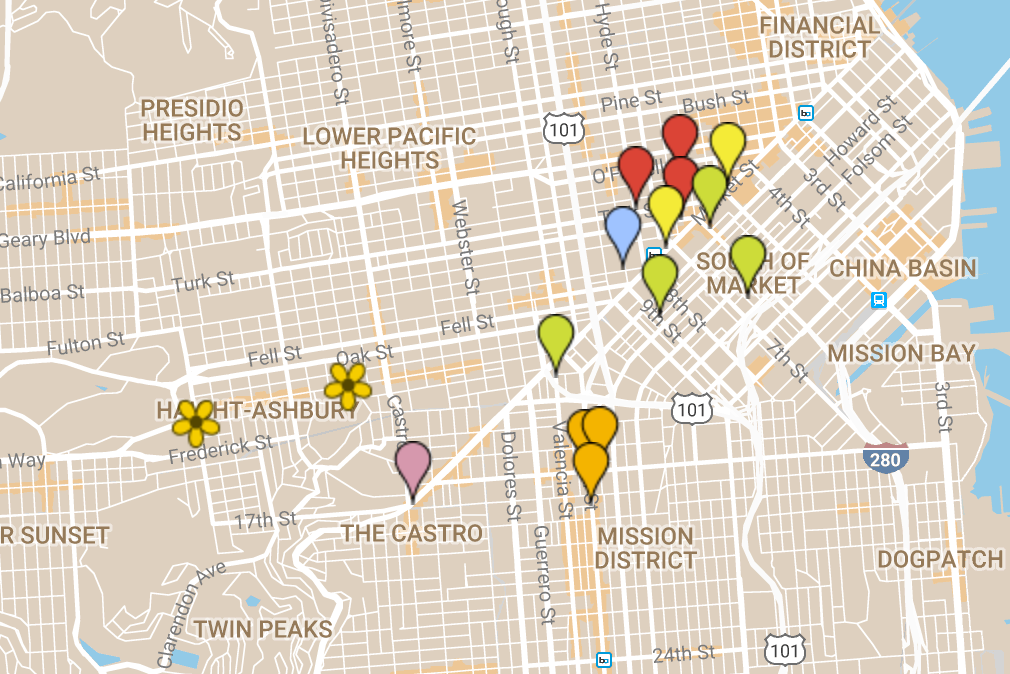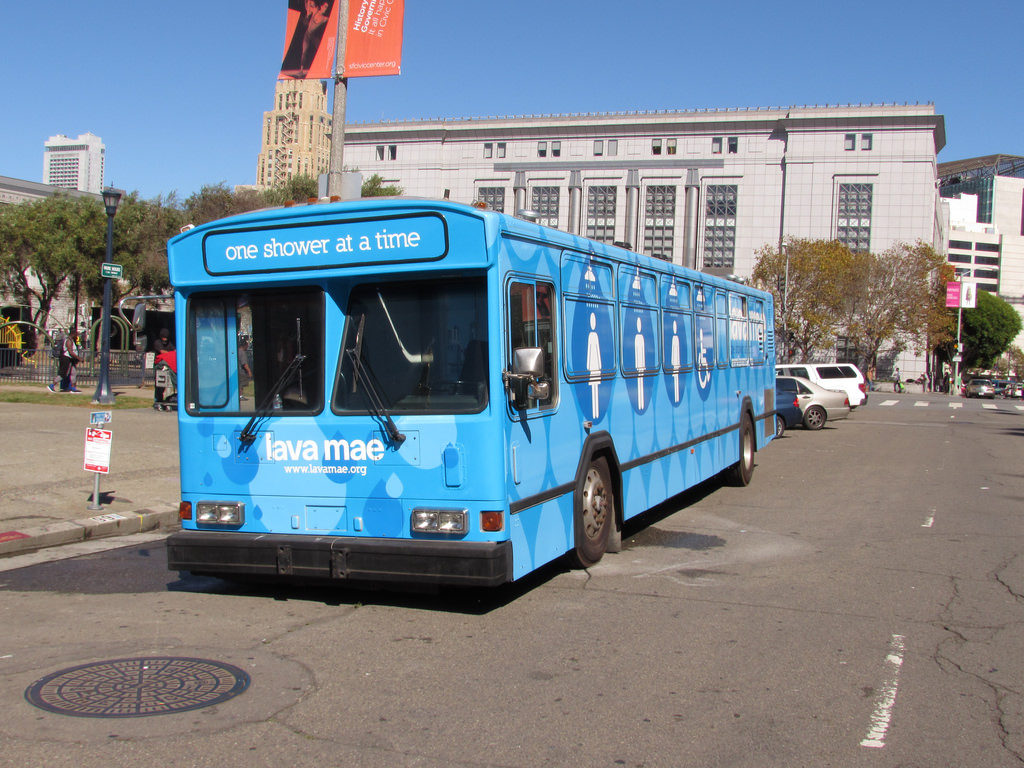
One of the biggest challenges the more than 7,000 homeless people in San Francisco face every day is finding somewhere to use the restroom. It’s something that homeless people are often demonized for, without giving much thought to the resources available to them: People want to use bathrooms, but are forced to go on the streets because there are so few restrooms available to them.
“Access to a bathroom to hygiene facilities is something with we often associate with developing countries,” Jennifer Friedenbach, director of the Coalition on Homelessness, says. “But here in the United States, specifically here in San Francisco, we have literally thousands of people who have no regular access to a bathroom facility.”
What Friedenbach says is true: Technically, there are 274 public restrooms in San Francisco, but many remain inaccessible to homeless people. Most of the restrooms are operated through the Department of Recreation and Parks or by San Francisco’s 28 public libraries, but are located in areas unpopulated by homeless people and close by nightfall. For homeless people, there is a lack consistent access to bathrooms.
“We see when we’ve tracked it that people go in doorways or parked cars, somewhere where there is some semblance of privacy. No one wants to go to the bathroom in the street,” says Rachel Gordon, spokesperson of the Department of Public Works.
The only public restrooms that are open 24/7 are the San Francisco Fire Department and the San Francisco Police Department. But the former is only accessible if the crew is at the station. And most homeless people, many of whom have had negative encounters with the police, consider the latter to be a hostile environment. What’s more, the stations do not appear to truly be open to the public, anyway— half of the ten SFPD stations told us that they did not have a public restrooms, and those that did required key code access and an escort.
The City has seen an improvement with public restrooms through the Pit Stop program. In 2014, the City piloted the program with three portable toilets in the Tenderloin. Today, there are 17 Pit Stops in eight neighborhoods, each staffed with an attendant.
While the bathrooms come at a hefty price tag at $200,000 per Pit Stop, they provide an important, and frequently used, resource to the city: clean, safe bathrooms that see an average of 26,000 flushes per month.
Gordon adds that the staffing provides much-needed employment for formerly incarcerated people, who are recruited in prison and provided with training and a job when they are released. And the staffing is important so that bathrooms are used for their intended use: Public restrooms can quickly become sites for drug and substance abuse, prostitution and other illegal activities. In one bathroom on Mission and 16th, the number of flushes averaged 25 per day. With staffing, flushes shot to 100 per day.
The City also runs 25 self-cleaning JCDecaux toilets, the dark green oval structures that you might see on street corners.

Still, the number of public restrooms clearly is not sufficient to serve the growing homeless population. One of the biggest challenges is that there are no public restrooms that exist at night. While the Pit Stops, parks and drop-in centers are available during the daytime, by 9 p.m. all park, library and Pit Stops are closed, leaving people on the streets with nowhere to use the restroom.
Initial conversations to open Pit Stops for longer periods of time have been halted by the potential danger that attendees who man the facilities alone could be exposed to at night. However, Gordon adds that the Pit Stops might be able to expand hours during longer days in the summer and open up bathrooms earlier in the morning.
In 2001, BART restrooms below street level were eliminated as a security measure in response to the 9/11 terrorist attacks. The restrooms, which were frequented by many homeless people, have never been reopened since.
One nonprofit, Lava Mae, has stepped up to the plate to provide bathrooms and showers. Founded just two years ago, Lava Mae’s bus-turned-shower and bathroom facilities provide more than 1,000 showers per month and serve a diverse population from individuals to families in varying housing situations. Throughout the week, Lava Mae’s two mobile showers move around the city, including the Mission Neighborhood Resource Center, the San Francisco Main Library and St. Anthony’s, a social service program which serves poor and homeless populations. Still, they, too, do not remain open at night.

Urine and feces on the streets are also one of the biggest complaints from San Franciscans: In 2016 alone, there were 18, 561 calls to 311, the City’s nonemergency hotline, around human waste. Since then, the number has grown: This year, there are 6,116 cases compared to 5,222 this same time last year.
However, the City’s response has been disheartening for many homeless advocates, who argue that homeless people continue to receive fines for public urination and defecation even when there is no other alternative. The citation could cost someone up to $500, an amount that homeless people most likely are unable to pay.
Friedenbach says, “We have a lot of complaints from people in the public that people are using the facilities outdoors. Every homeless person would prefer to have a dignified place to use a restroom and they simply can’t. The solution is easy: We just need more restrooms.”
Advocates also say that these citations are unfairly enforced: While most of the blame is directed at homeless people, bar patrons and others who publicly urinate are not shamed or cited.
While strategies to maintaining and providing public restrooms vary, one thing is clear: We need to provide more public bathrooms and showers to homeless people, and we need to provide them now.
Access to safe, dignified restrooms is a human right. Let’s uphold that right in San Francisco and open more 24-hour public restrooms. Increased bathrooms are better for everybody: those cleaning the streets, using the sidewalks, and for people deserve to use a safe and dignified bathroom.
What you can do to help
1. If your neighborhood is short on public restrooms (and, most likely, it is) call the Department of Public Works and ask for more Pit Stops! If your neighborhood already has them, ask to extend the Pit Stop hours.
2. Educate others and speak out if somebody negatively comments on the way a homeless person looks, dresses, or smells. Explain why we need more bathrooms and showers.
3. Sign St. Anthony’s petition, which calls on the City to provide toilets, showers, and garbage service. Find the petition here.

